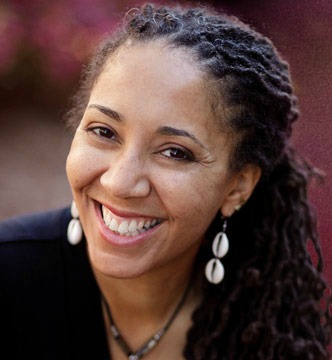Page 21 • (2,470 results in 0.066 seconds)
-
Association, Inc (NBMBAA) National Black Nurses Association, Inc (NBNA) National Society of Black Engineers (NSBE) Black Theatre Network The International Association of Blacks in Dance State and Federal Laws: Facts About Race/Color Discrimination Federal Protections Against National Origin DiscriminationNative American/Alaska NativeScholarships: ABA Foundation (travel & tourism) Alaska Native Scholarship from Study.com American Indian Education Fund American Institute of Certified Public Accountants
-
back burner. Both Sepper and Alazadi hope the Reflection Room will not only provide students from various faith traditions a place to worship but will also increase religious understanding on campus, giving the campus a more welcoming atmosphere. “Our hope down the road is that the Reflection Room will be a space that will welcome seekers who want to know more about the various faith traditions,” Sepper said. “We hope to build a bit of a library outside the room so that students could access books
-
into the ways faith and spiritual traditions shape human lives and communities. Students will demonstrate religious literacy by locating religious traditions within their historical, cultural, or political contexts. Students will critically and empathetically analyze diverse religious texts, practices, histories, ethics, and/or theologies by applying an appropriate method from the academic study of religion. Quantitative Reasoning (QR)Quantitative Reasoning (4): Students will develop skills to
-

people at PLU, about what you would all want hear. The Pacific Northwest has a huge relationship with religion. There are a lot of Native American religions and people who are more eclectic in religion. My interest is people who don’t fit into the typical religious categories. We know people who say, “I’m Christian” or “I’m Muslim.” I’m interested in how people in different religions get along and don’t get along based on their differences and beliefs. I’m really interested in people who don’t fit in
-
and camaraderie, but also ensure that students will fulfill both their Christian Traditions and their Global Religious Traditions requirements through this thematically unified pair of courses. Priority will be given to students who have declared or intend to pursue careers in medicine, counseling, hospital chaplaincy, or other healing traditions.Llewellyn Ihssen’s course (RELI 227) will explore the ways in which illness and healing have been understood within the Christian religion, from the
-
state-administered proficiency exams would also be professional, even though it is housed in a school typically identified with the liberal arts.While religious and psychological traditions have long recognized the inevitable need for all humans to develop a me, which they equate with the ego or the self-conscious individual, they also tell us that the fully developed person grounds and even selects this me upon a previously honed I. In religious traditions, the I is the deeply founded spirit or
-
era (c. 3,000 BCE to c. 1500 CE), paying close attention to themes of cross-cultural encounter, the rise and fall of empires, and explorations over land and sea. We will explore global patterns of trade, technology, and expansion; the spread of ideas, religious traditions, and philosophies; the relationship between warfare, colonization, and the rise of the nation state; and how different cultural, social, and religious encounters have shaped the emergence of the modern world. (4) HIST 103
-

.” One doesn’t get the sense that Paikai sees any irony in the fact that attending a Lutheran university drove him to embrace the faith of his grandparents. “Lutheranism isn’t about creating a bunch of more Lutherans,” he said. “This is a university that respects religious traditions, and encourages spirituality by asking a lot of deep questions.” He sees that all over campus – he says that he has spiritual conversations with everybody. “And when you do,” he recalled, ‘so often you’ll hear someone
-
In the following text, Dr. Carmiña Palerm, Associate Professor of Hispanic Studies and Director of the International Honors Program, considers how a Humanistic approach can inform the design and implementation of a study-away course. In this particular case study, Dr. Palerm describes a class titled “American Genesis: Indigenous Texts and their Resonance” that she offered as part of the Wang Center’s Gateway Semester Program in Oaxaca, Mexico in Fall of 2012.I had two goals in designing this
-
education a priority at Pacific Lutheran University. He says Lutheran higher education is intellectually inclusive, and therefore his calling to promote interfaith dialogue is a perfect fit. “Free inquiry includes asking about other religious traditions,” said Hammerstrom, associate professor of East Asian and comparative religions. Hammerstrom already teaches classes that immerse students in Buddhist communities here and abroad. During the summer, he took that commitment to the next level. He
Do you have any feedback for us? If so, feel free to use our Feedback Form.


